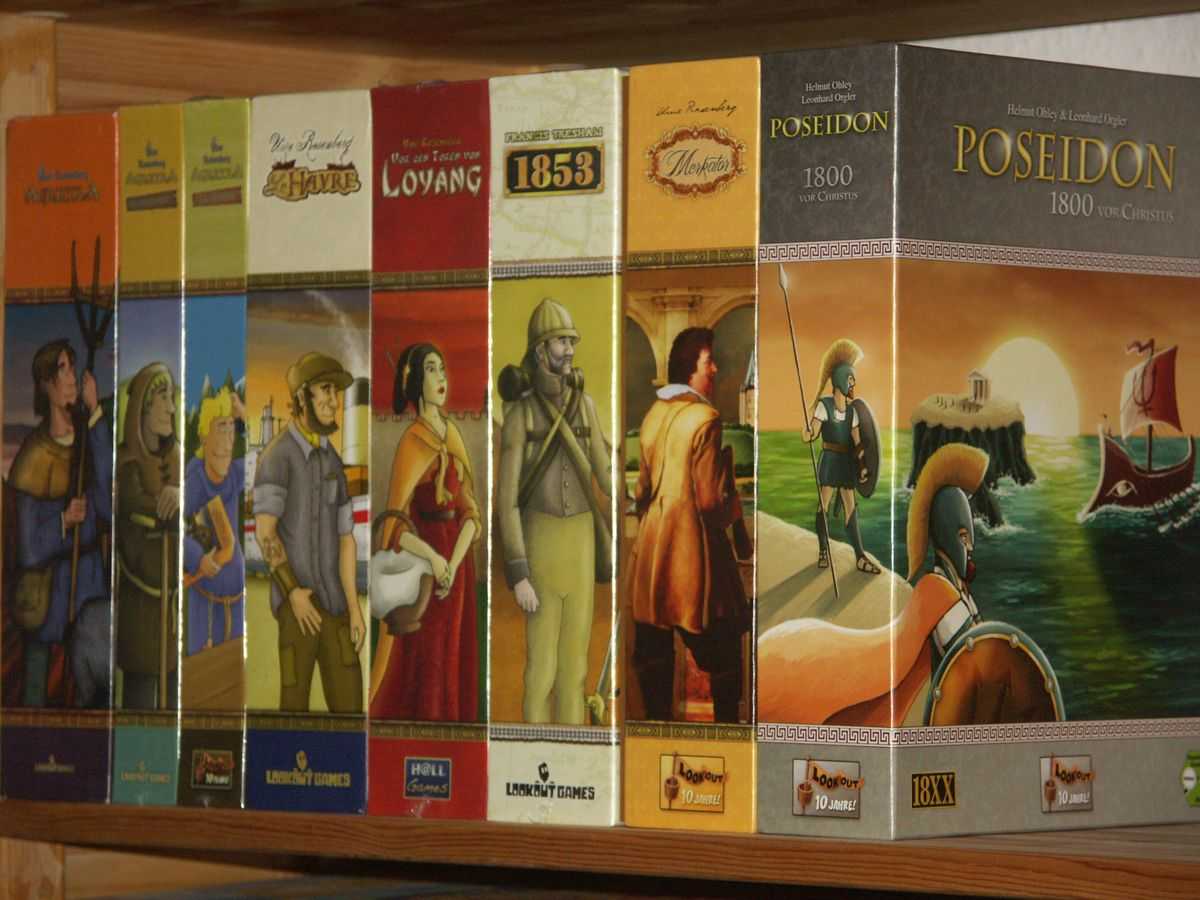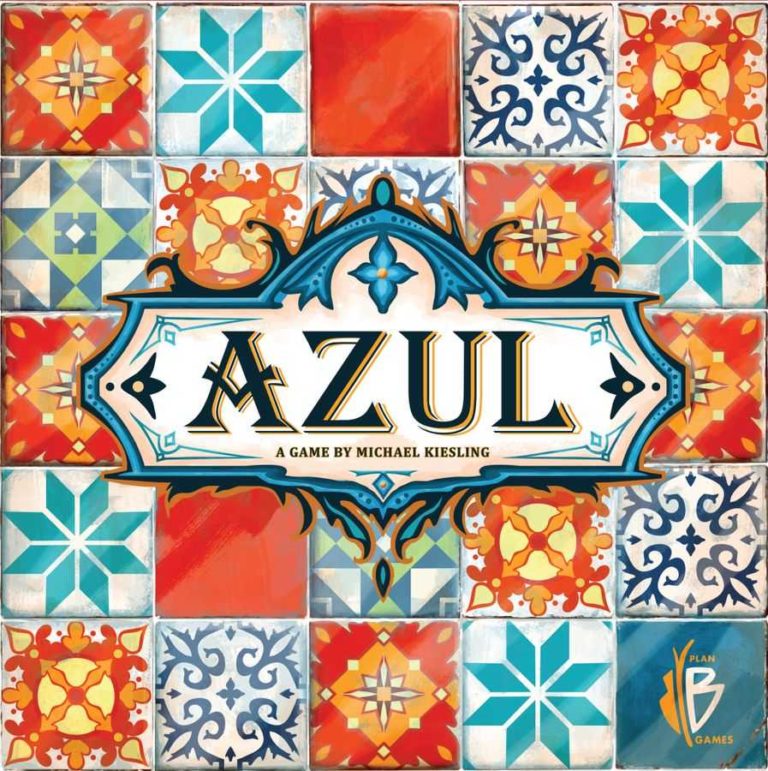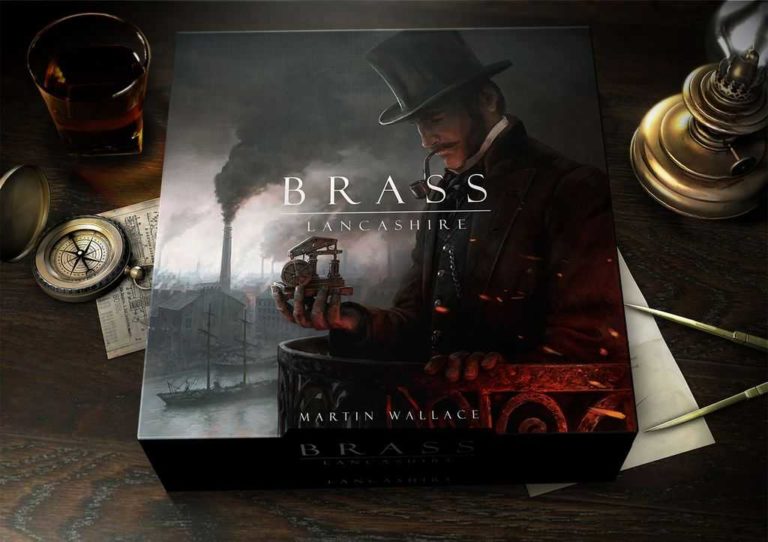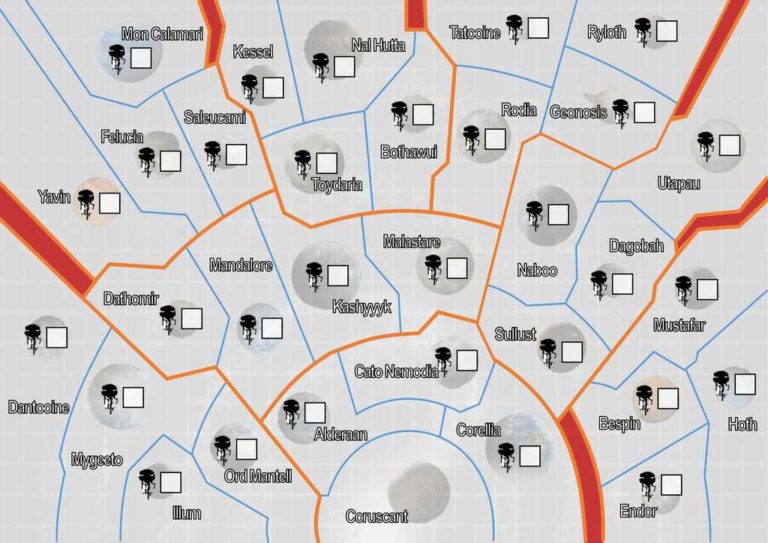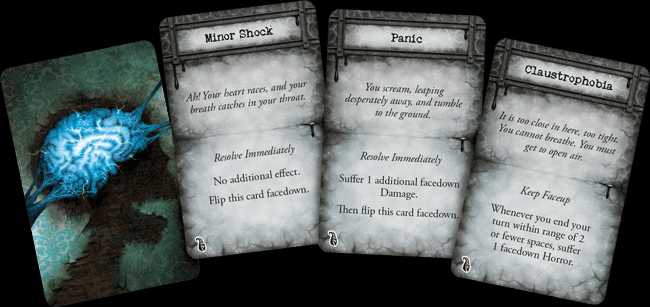Le Havre Review – Unveiling The Strategic Brilliance
Le Havre Review – Unveiling The Strategic Brilliance
Welcome to our Le Havre review, where we unveil the strategic brilliance of a game that’s charmed and challenged board gamers worldwide. Imagine gearing up for a session that’s not just about shipping goods or constructing buildings, but about weaving an intricate tapestry of strategies, each move calculated yet flexible. That’s the engaging complexity of Le Havre. With each play, I’ve found it to be a journey of discovery, a testament to the depth and elegance hidden within its maritime theme. This review aims to share that journey, exploring not only the components and mechanics of Le Havre but also the experiences woven around every turn and strategy that make it a remarkable addition to any game collection.
Key Points:
- Le Havre is a strategic board game set in a bustling harbor city.
- Designed by Uwe Rosenberg, the game emphasizes economic themes and resource management.
- Players engage in complex resource management, building construction, and ship development.
- Le Havre offers a blend of strategic depth, thematic richness, and player interaction.
- The game’s components include a detailed game board, building and ship cards, resource tokens, and money.
- Strategic success in Le Havre involves balancing short-term needs with long-term goals and adapting to opponents’ strategies.
- Le Havre stands out for its complex resource management, high replay value, and unique player interaction.
Having spent countless nights strategizing over resources, buildings, and ships, I’ve grown to appreciate Le Havre’s unique place amongst my vast collection of board games. From the first unpacking of its components to the hundredth round of shrewd resource management, the game has never failed to captivate. It’s more than just a game; it’s a narrative in itself, encouraging players to craft their tales of commerce and construction within its richly designed framework.
Diving into the World of Le Havre
Le Havre invites players into a bustling harbor city where they compete to become the wealthiest harbor master. Diving into this world means engaging in intricate resource management, strategic building, and ship construction, all while navigating the ebb and flow of market demands and opportunities.
Overview of Le Havre
Le Havre is a game of strategy, resource management, and cunning. Designed for 1-5 players, it offers a unique blend of complexity and accessibility, making each session a new challenge to be mastered. With gameplay lasting around 30-150 minutes, it suits both quick duels and lengthy battles of wit. Here’s a quick look at what Le Havre brings to the table:

| Aspect | Detail |
|---|---|
| Player Count | 1-5 |
| Game Duration | 30-150 minutes |
| Age | 12+ |
| Game Type | Economic / Resource Management / Strategy |
| Theme | Shipping, Harbor Management, Construction |
| Mechanics | Worker Placement, Resource Conversion |
In essence, Le Havre is a game where strategic depth meets thematic richness, offering a captivating blend of tactical decision-making and narrative immersion.
Le Havre offers a captivating blend of tactical decision-making and narrative immersion, making it a game where strategic depth meets thematic richness.
The Mind Behind the Game: Uwe Rosenberg
Uwe Rosenberg, the renowned game designer behind Le Havre, is a master of creating intricate and engaging board games. His designs often emphasize economic themes and resource management, with Le Havre standing out as a prime example of his expertise. Rosenberg’s ability to blend thematic depth with complex gameplay mechanics ensures that each game session is both challenging and immersive.
Rosenberg’s journey in game design has been marked by a passion for creating dynamic gaming experiences that challenge players to think strategically. Through games like Agricola, Rosenberg has cultivated a reputation for designing games that balance complexity with accessibility, ensuring that players always have room to grow and explore new strategies. Le Havre is no exception, encapsulating Rosenberg’s design philosophy by offering a richly thematic game that rewards thoughtful planning and adaptability.

The Art and Components of Le Havre
The art and components of Le Havre paint a vivid picture of a bustling harbor, where ships come and go, and goods change hands with every tide. The game’s components are not only functional but also contribute to the overall thematic experience, making players feel like genuine harbor masters. Here’s a glimpse into what you’ll find in the box:
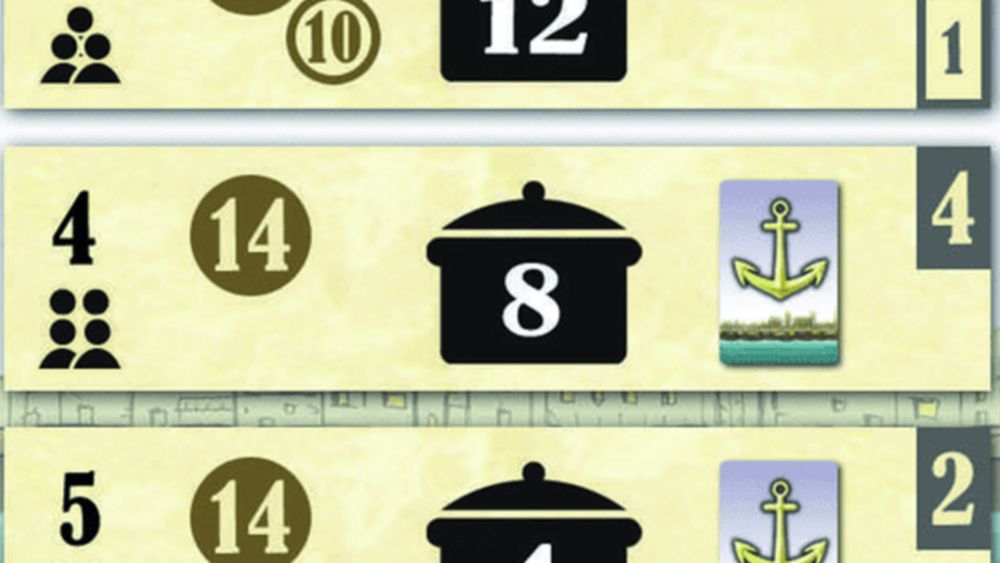
- Game Board: A detailed map of the harbor.
- Buildings and Ships: Cards and tokens that players use to expand their empire.
- Resource Tokens: Representing goods like fish, grain, and iron.
- Money: The currency of Le Havre, used in transactions and scoring.
These elements, from the intricately designed buildings to the colorful resource tokens, are more than just pieces; they are keys to unlocking the rich narrative and strategic depth of Le Havre.
The Strategic Depths of Le Havre
Exploring the strategic depths of Le Havre reveals a game that is both intellectually stimulating and unpredictably dynamic. Players must constantly adapt their strategies to the shifting sands of the market and their opponents’ moves, making every session a new puzzle to solve.

Setting Up for Success
Setting up for success in Le Havre involves more than just an understanding of the rules; it requires a keen sense of strategy and foresight. Players must balance their immediate needs with long-term goals, choosing whether to invest in buildings, ships, or resources. Each decision shapes the course of the game, making early planning crucial while leaving room for flexible decision-making as new opportunities and challenges arise.
Success in Le Havre hinges on strategic decision-making that balances short-term needs with long-term goals, emphasizing the importance of early planning and adaptability.
Navigating the Game Flow
In Le Havre, the game flow is both intuitive and yet complex, a delicate dance I find mesmerizing. Each round players are faced with a cycle of working and shipping phases, where timing is crucial for optimal resource management. This rhythm, once embraced, becomes a powerful tool for strategizing. At its core, successfully navigating Le Havre’s game flow means adeptly managing time and resources to build an engine that not only runs but thrives amidst the fluctuating tides of opportunity and restraint presented by the game. Mastery over this flow is what separates the good from the great players, making each game a new journey through strategic waters.
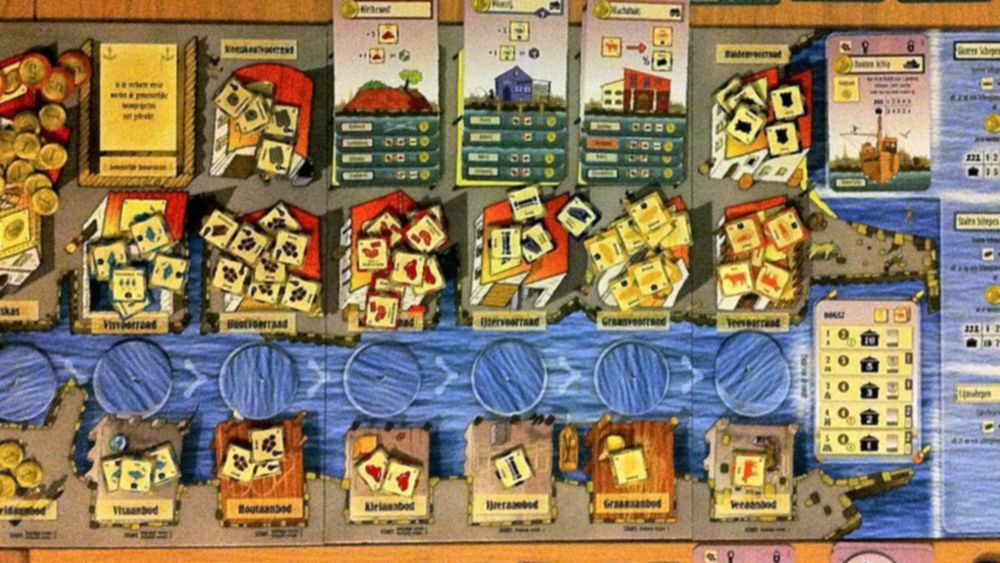
Mastering Your Turn: Strategies and Anytime Actions
Mastering your turn in Le Havre involves strategic foresight and the clever use of anytime actions. It’s a beautiful puzzle, where each piece must fit perfectly to complete the grand vision of your industrial empire. Strategies might involve prioritizing certain buildings for construction or acquisition early on, to enable more powerful combos or resource generation as the game progresses. Anytime actions, such as selling goods or using buildings, provide a flexible toolset that can adapt to the evolving game state, allowing for unexpected comebacks and thrilling victories from seemingly disadvantageous positions. The key here is to remain vigilant and adaptive, ensuring you’re always prepared to pivot your strategy as new opportunities arise.
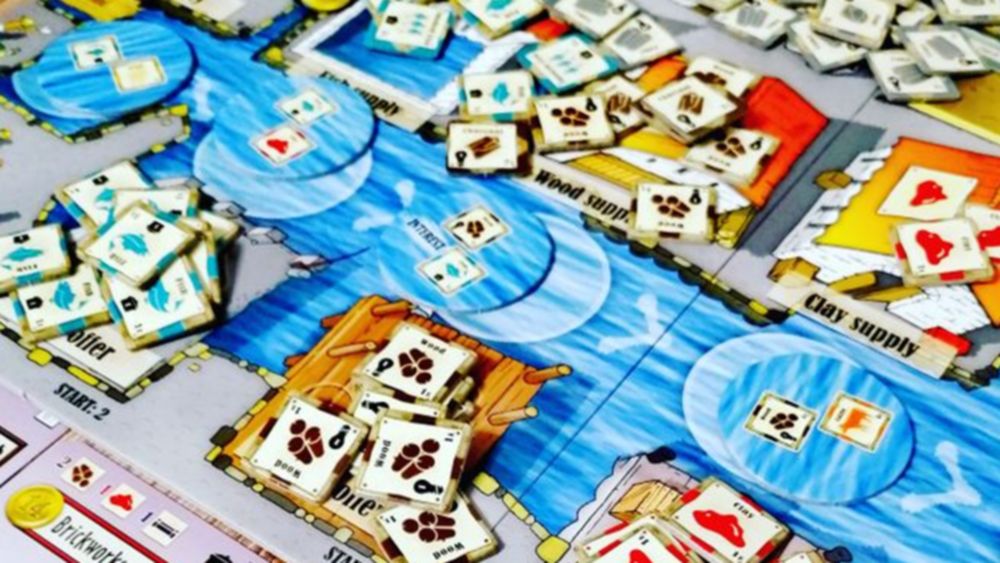
Mastering your turn in Le Havre involves strategic foresight, prioritizing key buildings, and utilizing anytime actions for flexible gameplay that can lead to unexpected comebacks and thrilling victories.
Planning for the Endgame
As the game nears its climax, planning for the endgame in Le Havre becomes a multi-faceted challenge that demands a strategic vision. This is where your early and mid-game efforts start to pay off, or falter, under the weight of your ambitions.
- Optimal Resource Conversion: Ensuring you have the mechanisms in place to convert basic resources into higher-value goods or currency.
- Strategic Building Acquisition: Building or acquiring structures that provide substantial endgame points or bonuses.
- Resource Stockpiling: Having a stockpile of resources that can be rapidly converted or used in the final turns can make a substantial difference.
- Adapting to Opponents’ Strategies: Keeping a watchful eye on your opponents’ strategies and potentially blocking or outmaneuvering them can tip the balance in your favor.
Success in these areas hinges on a delicate balance of aggression and caution, strategic investments, and sometimes a bit of luck, as you navigate the final rounds with your eyes on victory.
Our Comprehensive Take on Le Havre
Le Havre is a masterpiece of strategic depth, blending resource management and player interaction into a complex, yet accessible tableau. The game’s endurance in the board gamer’s consciousness speaks to its design brilliance and the rich, strategic gameplay it offers. While it may present a formidable learning curve for newcomers, those who take the time to understand its mechanics will find a rewarding gameplay experience. Le Havre represents interactive storytelling through economics and development, a feat not easily accomplished in the board gaming world.
Highlights of the Game
Le Havre is a game that stands out for its depth and replayability.
- Complex Resource Management: Players praise the intricate balance required to manage resources effectively.
- Strategic Gameplay: The need to plan several moves ahead and adapt to changing circumstances makes for an engaging challenge.
- High Replay Value: With a variety of strategies to explore, the game feels fresh even after multiple plays.
- The Sense of Progression: Watching your empire grow over the game is incredibly satisfying.
- Unique Player Interaction: Indirect competition through building usage adds a layer of strategy without direct conflict.
These highlights contribute to the game’s richness and make it a beloved choice among strategy game enthusiasts.
Players love Le Havre for its intricate resource management, strategic gameplay, high replay value, sense of progression, and unique player interaction, making it a beloved choice among strategy game enthusiasts.
Areas for Improvement
Despite its brilliance, Le Havre isn’t without its improvements area. Some players find the setup and teardown times somewhat cumbersome, particularly with the large number of components to manage. Additionally, the game length can deter quicker-play fans, especially with more players. A common critique is the game’s scalability, with some feeling it loses some charm outside the 2-3 player range. Moreover, the visuals and component quality have been noted for potential improvement, to enhance the overall experience and immersion in the game’s thematic elements.
Ideal Player Profile for Le Havre
Le Havre suits a specific gamer profile, one who delights in deep strategic planning and enjoys the long-term payoff of early decisions. It’s perfect for those who appreciate a rich narrative woven through economic and developmental strategies, offering a satisfying sense of empire building. Gamers who enjoy resource management and optimizing complex systems will find themselves right at home. Conversely, it might be less appealing to those seeking quick games with high levels of direct conflict. But if you’re the kind of player who relishes the challenge of balancing efficiency with adaptability, who enjoys the cerebral tug-of-war against both the game and opponents, then Le Havre could be your next favorite. This game rewards patience, strategic foresight, and those who find joy in meticulously crafted victories, making each play an endearing puzzle waiting to be solved.
Le Havre is a game that rewards patience, strategic foresight, and meticulous planning, appealing to players who enjoy balancing efficiency with adaptability in a rich narrative-driven empire-building experience.
Comparing Le Havre to Other Strategy Games
When setting Le Havre beside other stalwarts in the strategy game genre, its unique blend of resource management and economic simulator shines through. One might wonder how it stacks up against games of similar vein. Personally, having dived deep into numerous board games over the years, I find Le Havre to maintain a singular position with its elegant game mechanics and immersive play.
The table below highlights some of the key differences:
| Game | Play Time | Player Interaction | Complexity |
|---|---|---|---|
| Le Havre | 30-150 min | Moderate | High |
| Agricola | 30-120 min | High | High |
| Caverna | 30-210 min | Moderate | High |
| Puerto Rico | 90-150 min | High | Moderate |
As seen, Le Havre distinguishes itself with flexible playtime and a balanced complexity that appeals widely. Its approach to player interaction, focusing more on strategy over direct confrontation, sets a tone that differs from the competitive edge present in games like Agricola.
FAQs
1. What makes Le Havre stand out from other resource management games?
Le Havre stands out due to its deep strategic gameplay and flexible paths to victory. Unlike many other games in its genre, it allows players to form long-term plans while offering ample opportunities to adapt strategies as the game unfolds.
2. How long does a typical game of Le Havre take?
A typical game of Le Havre can take anywhere from 30 to 150 minutes, greatly depending on player count and experience level. Games with fewer players tend to move quicker, allowing for more rapid gameplay.
3. Can Le Havre be enjoyed by casual gamers?
Le Havre can indeed be enjoyed by casual gamers, particularly those willing to dive into its depth after overcoming a modest learning curve. Its balance of simple rules and strategic complexity offers a rewarding experience regardless of skill level.
4. Where can I find Le Havre and its expansions?
Le Havre and its expansions can typically be found at online board game retailers, local game stores, and directly from the publisher. Checking online marketplaces can also yield both new and used copies at varying price points.
Conclusion
Reflecting on this Le Havre review, it’s clear that the game stands as a testament to strategic brilliance and engaging gameplay. From its richly detailed components to the thoughtful game mechanics, every playthrough reveals new layers of depth and enjoyment.
Whether you’re a seasoned strategist or someone just starting to explore the world of board games, Le Havre offers both challenge and delight. It straddles a fine line between complexity and accessibility, making it a standout in the pantheon of great strategy games.
If you’ve ever found yourself lost in the joy of planning several moves ahead or reveling in the execution of a perfectly laid plan, Le Havre is a journey worth embarking on. How will it shape your gaming nights? Share your own Le Havre experiences and let’s celebrate the beloved world of board gaming together.
Until next time, happy gaming!
Lucas
This article uses material from BoardGameGeek and is licensed under the Creative Commons Attribution-Share Alike License.

